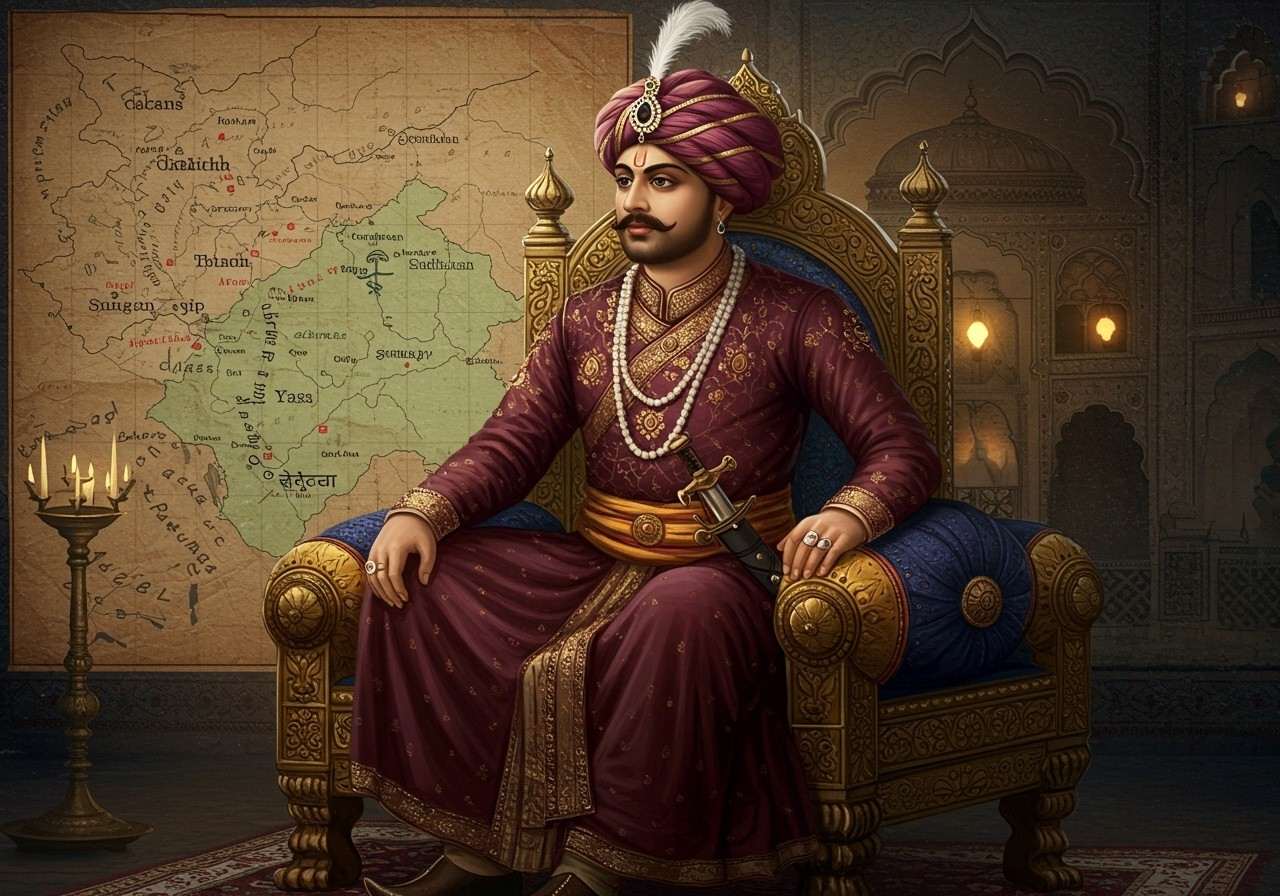
India’s history is not just about grand empires and victorious kings; it’s also woven with the poignant tales of those who stood at the crossroads of change. One such compelling story is that of Shams-ud-Din Muzaffar Shah III, the last ruler of the Gujarat Sultanate. His life is a powerful reminder of a vibrant kingdom’s final moments before it merged into the vast tapestry of the Mughal Empire. For those of us who cherish our virasat (heritage), his journey offers deep insights into the complexities of power, destiny, and cultural legacy.

A King in Name: The Tumultuous Rise to Power
Imagine Gujarat in the mid-16th century – a land bustling with trade, its ports alive with merchants from distant lands. It was a jewel of prosperity. It was into this world that Muzaffar Shah III was thrust onto the throne in 1561. However, his ascension was clouded in mystery and intrigue. After the assassination of the previous sultan, a powerful noble named Ítimád Khán presented a young boy he claimed was a long-lost son of a former king. Many whispered that the boy was actually Nathu, a commoner chosen to be a puppet ruler.
From the very beginning, Muzaffar Shah III’s reign was a reign in shadows. While he bore the title of Sultan, the real power was held firmly in the hands of his ambitious nobles. They managed the state, made the decisions, and left him as a mere figurehead, a symbol of a power he never truly possessed.
The Mughal Storm and a Fleeting Taste of Freedom
The winds of change were blowing across India. The mighty Mughal Emperor, Akbar, had his eyes set on the wealthy and strategic land of Gujarat. In 1573, the inevitable happened. The Mughal army annexed the Sultanate, and Muzaffar Shah III was captured and taken as a prisoner to Agra. For many, this would have been the end of the story.
But destiny had one more chapter for him. In 1583, in a daring move, Muzaffar Shah III escaped his prison and returned to Gujarat. With the help of loyal nobles who rallied to his cause, he briefly reclaimed his throne. For a fleeting moment, the hope of an independent Gujarat was rekindled. However, the Mughal empire’s might was too great. In January 1584, Akbar’s general, Abdul Rahim Khan-I-Khana, decisively defeated him, extinguishing that hope forever.
The Final Chapter and an Enduring Legacy
Forced to flee, the former Sultan lived the life of a wanderer, seeking refuge with various local chieftains. His tragic journey finally came to an end in 1592. Betrayed and about to be handed over to the Mughals, Muzaffar Shah III took his own life, choosing to die rather than face the humiliation of captivity again. His death marked the final, definitive end of the Gujarat Sultanate.
His legacy is a complex one. It speaks of a time of transition, highlighting the end of a regional power and the rise of a pan-Indian empire. His story reminds us that history is made of both triumphs and tragedies, and each narrative adds a unique colour to our shared past.
Stories like these are the threads of our rich Indian heritage. To delve deeper into the fascinating history of our land and the figures who shaped it, why not explore the wonderful collection of historical and cultural books available at poojn.in? It’s a beautiful way to connect with our roots.
Understanding the Last Sultan’s Era
As we reflect on his life, many questions naturally come to mind about his reign and its impact. It helps to understand the nuances of his time to truly appreciate his place in our history.
A key point of curiosity is the true significance of Muzaffar Shah III’s rule. His reign is incredibly important because it represents a major turning point. It was the moment the prosperous, independent Gujarat Sultanate was absorbed into the expanding Mughal Empire, forever changing the political and cultural landscape of the region.
People also wonder how he influenced the culture of Gujarat. Despite the political turmoil, his era continued the Sultanate’s tradition of being a patron of arts and architecture. The blending of Islamic and local design elements that flourished during this time left a lasting mark on the region’s cultural identity, a legacy we can still see today.
The story of his downfall often leads to the question of what challenges he truly faced. Muzaffar Shah III was battling on multiple fronts. Internally, he was a pawn in the hands of his own court. Externally, he faced the unstoppable ambition of Emperor Akbar, whose goal was to unify India under Mughal rule, making the conquest of a strategic state like Gujarat a top priority.
Ultimately, Muzaffar Shah III is remembered today as a tragic figure, the last symbol of an independent kingdom before it gave way to a larger empire. His life serves as a poignant chapter in the grand narrative of Indian history, reminding us of the constant ebb and flow of power and the personal stories behind monumental historical shifts.


